
123 years ago, Alice Neel was born. Known for her portraits depicting friends, family, lovers, poets, artists, and strangers, her paintings have an expressionistic use of line and color, psychological acumen, and emotional intensity, and often portray women through a female gaze. In a fine arts college in Pennsylvania, she rejected Impressionism in favor of, for the knowledge readers, “the Ashcan School of Realism.” READ more, and look at some of her works… (1900)
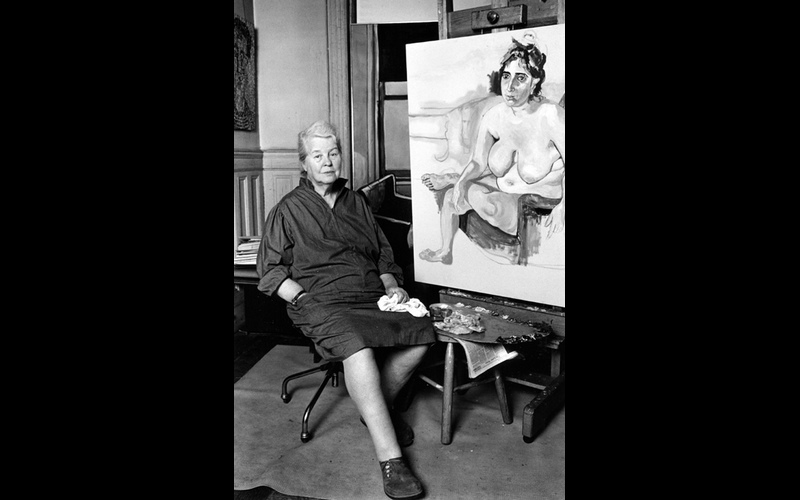
Ginny Neel, Alice’s daughter-in-law said once of Alice that “even in the insane asylum, she painted. Alice loved a wretch. She loved the wretch in the hero and the hero in the wretch. She saw that in all of us, I think.” The asylum reference was from the grief that consumed her upon the death of her Cuban husband Carlos, and their daughter, Santillana.
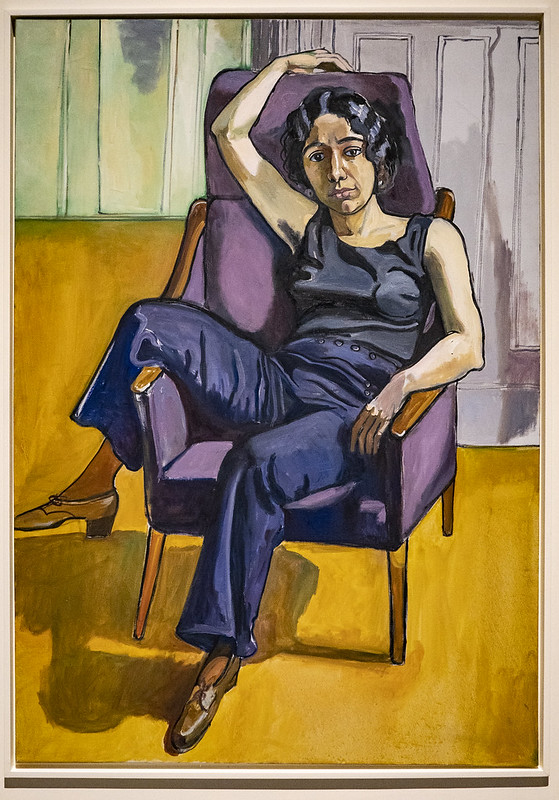
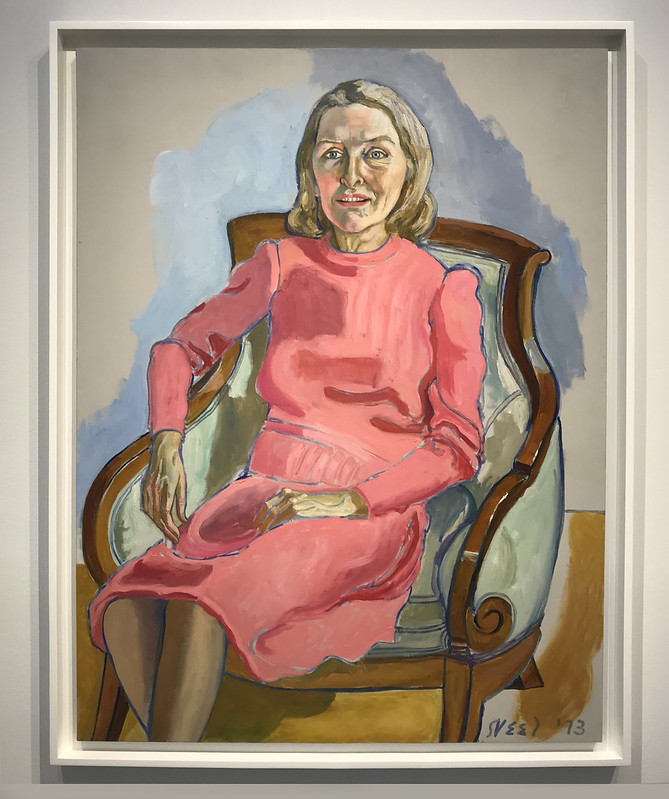
The summer of 1930 was a period in her life that she described “as one of her most productive” because that was when she painted her earliest female nudes. The female nude in Western art had always represented a “Woman” as vulnerable, anonymous, passive, and ageless and the quintessential object of the male gaze. However, Neel’s female nudes contradicted and “satirized the notion and the standards of the female body.” By this sharp contrast to this prevailing idealistic idea of how the female body should be portrayed in art, art historians believe that she was able to free her female sitters from this prevailing ideology that in turn gave them an identity and power.
MORE Good News on this Date:
- The Warsaw Confederation sanctioned religious freedom in Poland (1573)
- Jane Austen’s Pride and Prejudice was first published — with its first print run selling out at about 1,500 copies (1813)
- The world’s largest snowflakes fell in Fort Keogh, Montana, which were reported to be 15 inches / 38 cm wide (1887)
- A Tomb of the Unknown Soldier was added beneath the Arc de Triomphe in Paris to honor the unknown dead of World War I (1921)
- Iceland became the first country to legalize abortion (1935)
- Italian police rescued a U.S. General after 42 days as a hostage of the Red Brigade (1982)
65 years ago today, the son of a Danish carpenter and successful toymaker named Godtfred Christiansen, walked into a patent office and filed for a design of interlocking plastic bricks that would go on to become the world’s most successful toy company. Meaning “play well,” LEGO, as we know it today, was born when Godtfred began to realize the capability which plastic had for replacing wood in children’s toys. It took five years to find the right material for the brick which that patent still produces today. It’s made of ABS (acrylonitrile butadiene styrene) polymer, and 600 billion have been made to date.

Brand staples like LEGO themed sets and minifigures wouldn’t arrive until at least a decade later. Despite this the simple blocks continued to grow in popularity. Lego bricks from 1958 still interlock with those made in the current time, and Lego sets for young children are compatible with those made for teenagers. Six bricks of 2 × 4 studs can be combined in 915,103,765 ways. Another of LEGO’s great miracles is its precision. With manufacturing machines capable of honing a brick’s dimensions to within 10 micrometers, the bricks fit together firmly and resist dismantling under force, but yet they can be easily pulled apart, even by a child.
Society almost lost LEGO during the 1990s, when a string of unpopular product launches landed the company in dire financial conditions. In those days it was actually adults who looked to build for that Zen-feeling one gets when deeply immersed in constructing a structure from freeform LEGO pieces, and others who began to use simple electrical currents to create sets and machines that actually moved, that saved the company. As of 2021, they were the largest toy company on earth. (1958)
Happy 87th Birthday to Alan Alda, best known for his comedic role as Capt. Hawkeye Pierce in the TV series M*A*S*H, for which he was nominated for 21 Emmy Awards during the run from 1972-83, and won five. He also wrote and directed many episodes, including the 2-hour series finale—which became the single most-watched episode of any series in American TV history.
 He made his film directorial debut in The Four Seasons, which he co-wrote, starring alongside Carol Burnett, and made his marriage debut in 1957 co-starring with his college sweetheart Arlene—to whom he is still wedded.
He made his film directorial debut in The Four Seasons, which he co-wrote, starring alongside Carol Burnett, and made his marriage debut in 1957 co-starring with his college sweetheart Arlene—to whom he is still wedded. 
Beyond Arlene, and doing extensive charity work (especially for St. Jude’s), his major passion is for science. He hosted and did interviews for the PBS show Scientific American Frontiers, and now Alda uses his expertise in acting and communication to help scientists communicate more effectively when sharing their findings to the public. 15,000 people were trained since he founded the Alan Alda Center for Communicating Science at Stony Brook University in 2010.
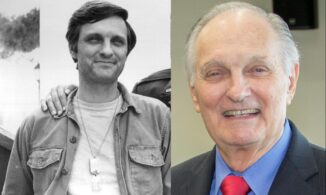
He was diagnosed in 2015 with Parkinson’s disease and developed tremors, but that didn’t keep him from using his distinctive voice. In 2020 he released an original podcast called Soldiers of Science: The Vietnam War, Anthony Fauci & the Doctors who Revolutionized American Medicine. He’s also began hosting two podcasts: Clear + Vivid with Alan Alda, as well as Science Clear + Vivid. (1936)
Over the last decade, Alda has published two memoirs, Never Have Your Dog Stuffed: and Other Things I’ve Learned, and Things I Overheard While Talking to Myself. (2015 photo, above: Moody College of Communication Austin 2015, CC license)
WATCH him talk about his SAG Lifetime Achievement award…
On this day 38 years ago, a group of American performers recorded the charity song, We Are the World, to raise money for famine relief in Africa. Written by Michael Jackson and Lionel Richie, the song became the fastest-selling American pop single in history, selling over 20 million copies and raising over $63 million immediately for humanitarian aid.
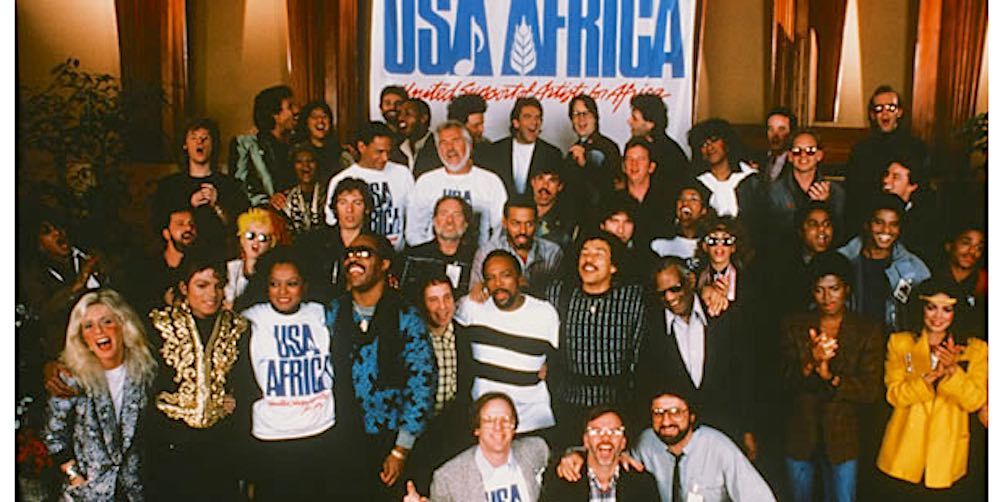
More than 45 of America’s biggest names in music “checked their egos at the door’ to make the USA for Africa recording, including Michael Jackson, Bob Dylan, Paul Simon, Stevie Wonder, Ray Charles, Billy Joel, Tina Turner, Diana Ross, Bruce Springsteen, Dionne Warwick, Willie Nelson, Harry Belafonte, Kenny Loggins, Steve Perry, and more. With its dazzling cast, the song eventually became the biggest selling single in both pop music history.
In the 37 years since then, the recording produced by Quincy Jones has raised over one hundred million dollars for African relief. Check out the USAforAfrica.org website for more photos and info. GET THE CHILLS WATCHING the historic video below… (1985)
SHARE the Milestones, Memories, and Music…